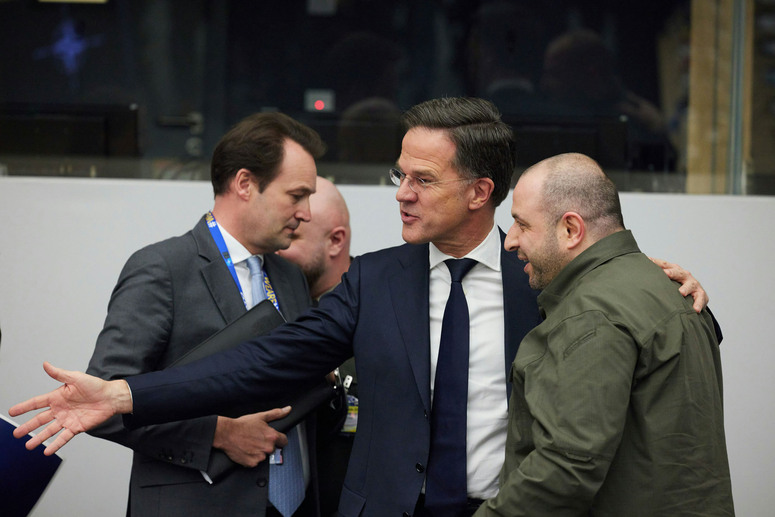Ukrainian workshops forge tomorrow’s weapons with allies while Washington watches from sidelines

Despite the US’s absence, the Ramstein meeting on 4 June kicked off a new era of military aid for Ukraine, with billions in investments and joint weapons production.
The Ukraine Defense Contact Group convened for the second time this year at NATO headquarters to discuss Ukraine’s defense needs, review plans for the rest of the year, and reaffirm continued support.
Ramstein moves forward without the US
For the first time since the group’s creation, the US Secretary of Defense was absent from the meeting.
The Pentagon explained that Pete Hegseth had a tight schedule, writes ArmyInform. He also won’t attend today’s NATO–Ukraine Council meeting, although he did arrive for the NATO ministerial and attended the Alliance’s headquarters on the morning of 5 June.
The US is gradually distancing itself from the Ramstein format, which was launched by the previous Joe Biden administration.
Nevertheless, the meeting results demonstrate that the rest of the allies remain committed to supporting Ukraine militarily, as confirmed by the announcement of new aid packages.
Ukraine and allies won’t just share weapons
The central takeaway from the Contact Group meeting was the agreement to create a joint defense production mechanism. Ukraine’s Defense Minister Rustem Umerov said the concept came from partners offering to help establish defense production involving Ukrainian companies.
“Our partners are ready to fully finance the production, and the products made under Ukrainian licenses will be sent to Ukraine as long as the war continues,” he explained.
During the discussions, however, the plan evolved into mutual investment: Ukrainian manufacturers will be able to invest in partner countries, while companies from these countries will be able to build large-scale factories in Ukraine.
Umerov noted that the idea is still new, with details under discussion and no official name yet.
“We’re calling it ‘Ramstein investments in the defense industry,’ but this is a strategic breakthrough,” the minister emphasized.
There are already specific agreements on joint production:
- A Western European company announced it will produce modern anti-Shahed missiles in Ukraine,
- The UK and Ukraine will jointly manufacture LMM missiles and launchers,
- Rheinmetall is building cutting-edge Lynx combat vehicles in Ukraine,
- Ukrainian companies are producing ammunition under Nammo licenses,
- SAAB, Kongsberg, KNDS, FFG, and Raytheon are all expanding their presence in Ukraine.
The SAAB produces Gripen fighter jets, Raytheon manufactures Patriot missiles, the only type capable of intercepting Russia’s ballistic missiles, KNDS makes missiles for NASAMS, and FFG is notable for supplying military vehicles and equipment, including contributing Leopard 1A5 tanks.
“Ukrainian drones have changed the situation on the battlefield, and now they will change how Ramstein countries prepare for future threats,” Umerov stated.
100,000 drones and a record £4.5 billion in aid
Before the session even began, London announced a new aid package with a special focus on drones: 100,000 drones for Ukraine’s Defense Forces by the end of 2025, ten times more than last year, with record investments of £350 million.
Additionally, 140,000 artillery shells have already been delivered. Another £247 million will go toward training Ukrainian troops as part of Operation Interflex, which has already trained 55,000 Ukrainian soldiers.
German long-range weapons to be built on Ukrainian soil
Germany, in turn, confirmed its previously announced €5 billion military aid package. It includes funding for long-range weapons to be produced in Ukraine, as well as the delivery of air defense systems, weapons, and ammunition.
German Defense Minister Boris Pistorius assured that supporting Ukraine remains a priority both for the new German government and for him personally.
War at Sea: Netherlands, Canada, and Belgium expand maritime and electronic warfare fronts
Support for Ukraine goes far beyond just two countries. The Netherlands is focusing on maritime security: €400 million will go toward a mine countermeasure ship, boats, and maritime drones for Ukraine.
Norway is prioritizing support for Ukraine’s defense industry, allocating $700 million for drones and contributing $50 million to the NSATU fund.
Canada will provide $45 million for drones, electronic warfare equipment, and will send Coyote and Bison armored vehicles to Ukraine.
Belgium, which hosted Ramstein for the second time, announced a long-term initiative — committing to €1 billion annually in aid to Ukraine through 2029 and the delivery of a mine countermeasure vessel.
Sweden allocated €440 million for international programs to purchase artillery shells, drones, and other weaponry for Ukraine.